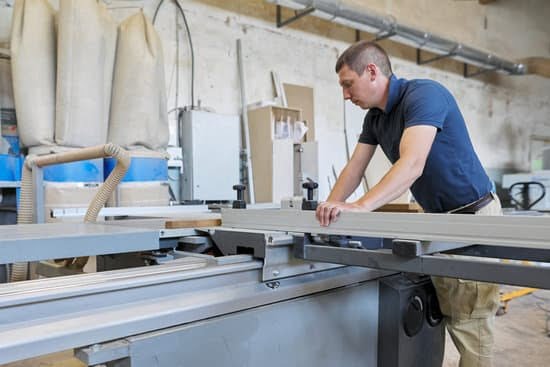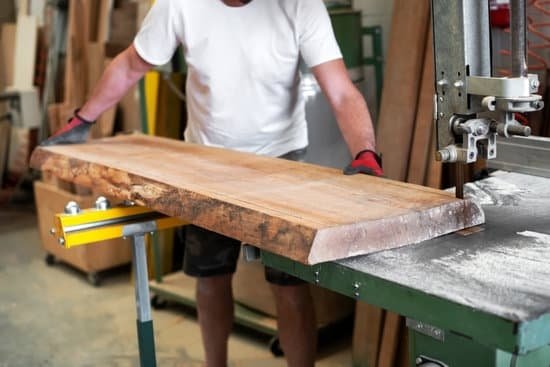Angle cubes are essential tools for precision in woodworking, allowing craftsmen to measure and set angles accurately. Choosing the best angle cube for woodworking is crucial for achieving flawless results in your projects. An angle cube provides precise measurements that guarantee the perfect alignment of joints, bevel cuts, and intricate woodwork designs.
In woodworking, accuracy is paramount, and using an angle cube ensures that every piece of your project fits together seamlessly. An angle cube is a versatile tool that can be used for various tasks, such as setting up machinery at the correct angles or ensuring the straightness of cuts and assemblies. With so many options available on the market, it’s important to consider several factors when selecting the right angle cube for your needs.
Factors such as accuracy, durability, and ease of use play a significant role in determining the best angle cube for woodworking. By understanding what features to look for in an angle cube, you can make an informed decision that will enhance your woodworking experience. In the following sections, we will delve deeper into what makes a top-quality angle cube and compare some of the best options currently available in the market.
What Is an Angle Cube
An angle cube is a handy tool that is essential for any woodworking enthusiast looking to ensure precision and accuracy in their projects. But what exactly is an angle cube and how can it benefit woodworkers?
An angle cube, also known as a digital angle gauge or inclinometer, is a device used to measure angles with a high level of accuracy. It typically consists of a small, compact unit with a digital display that provides readings in degrees, allowing woodworkers to set up and check angles with ease.
In woodworking, an angle cube serves multiple purposes, such as checking the accuracy of miter saw cuts, setting up bevel angles on table saws, ensuring the alignment of jointer fences, and verifying the squareness of workpieces. By using an angle cube, woodworkers can eliminate guesswork and achieve precise results in their projects. The versatility and convenience offered by an angle cube make it an indispensable tool in any woodworking shop.
When choosing the best angle cube for woodworking projects, there are several factors to consider. Accuracy is paramount, as even minor discrepancies can lead to significant errors in woodworking projects. Durability is also crucial since woodworking environments can be rough on tools.
Additionally, ease of use plays a significant role in ensuring that woodworkers can efficiently utilize the angle cube without complications. By carefully evaluating these factors, woodworkers can select the ideal angle cube that meets their specific needs and preferences.
| Factor | Consideration |
|---|---|
| Accuracy | Ensure precise measurements for accurate results |
| Durability | Select a sturdy tool that can withstand tough woodworking conditions |
| Easy of Use | Choose an angle cube that is user-friendly for seamless operation |
Factors to Consider When Choosing an Angle Cube
Accuracy
One of the most crucial factors to consider when choosing an angle cube for woodworking is its accuracy. A high-quality angle cube should provide precise measurements to ensure that your woodworking projects are executed with the utmost precision. Look for an angle cube that has a high level of accuracy, typically measured in degrees or minutes. This will help you achieve accurate angles and cuts, resulting in professional-looking finished products.
Durability
Durability is another key feature to pay attention to when selecting an angle cube for woodworking. Since woodworking can be a hands-on and sometimes rigorous activity, it’s essential to choose an angle cube that can withstand the wear and tear of regular use.
Opt for an angle cube made from durable materials such as aluminum or stainless steel, as these materials are known for their longevity and resistance to corrosion. Additionally, consider a model that is shock-resistant to ensure it can handle accidental drops or bumps in the workshop.
Ease of Use
An angle cube should not only be accurate and durable but also user-friendly. When shopping for an angle cube for woodworking, look for one that is intuitive to use and easy to read.
Consider features like a digital display screen with clear readings, simple calibration settings, and ergonomic design for comfortable handling during prolonged use. An angle cube that is easy to operate will not only save you time but also enhance your overall woodworking experience by providing hassle-free measurements and adjustments.
Top 5 Angle Cubes for Woodworking
When it comes to woodworking, having the right tools can make all the difference in the quality of your projects. One essential tool that every woodworker should have in their arsenal is an angle cube. An angle cube is a device that helps woodworkers accurately measure and set angles, ensuring precise cuts and joints in their workpieces. With so many options available in the market, it can be overwhelming to choose the best angle cube for woodworking.
One of the key factors to consider when choosing an angle cube is accuracy. The whole point of using an angle cube is to ensure that your angles are spot on, so you’ll want a device that provides precise measurements. Additionally, durability is crucial as woodworking can be a demanding task that puts tools through wear and tear.
A sturdy angle cube will last longer and continue to provide accurate readings over time. Ease of use is another important consideration – you’ll want a tool that is intuitive and user-friendly, making your woodworking projects more efficient.
So, what’s the best angle cube for woodworking? Let’s take a look at some of the top options available in the market and compare their features to help you make an informed decision. By understanding the pros and cons of each angle cube, you can determine which one suits your needs and preferences best for your woodworking projects.
Pros and Cons of Each Angle Cube
When it comes to choosing the best angle cube for woodworking, there are several options available on the market that offer different features and benefits. Understanding the pros and cons of each recommended angle cube can help you make an informed decision based on your specific needs and preferences.
One of the top angle cubes for woodworking is the Wixey Digital Angle Gauge. This digital angle cube is known for its precision and accuracy, making it a popular choice among woodworkers who require precise measurements for their projects. The digital display provides clear readings, which can be essential for achieving accurate angles in woodworking. However, some users have noted that the battery life on this device is not as long-lasting as they would like, requiring frequent replacements.
Another highly recommended angle cube is the iGaging Digital Protractor Angle Finder. This tool offers a variety of measuring functions beyond just angles, making it versatile for different woodworking tasks. The large display screen and easy-to-use controls make it user-friendly for both beginners and experienced woodworkers. However, some users have reported durability issues with this angle cube, noting that it may not withstand heavy-duty use over time.
For those looking for a more budget-friendly option, the GemRed Digital Angle Finder is a popular choice among woodworkers. This compact and lightweight angle cube offers decent accuracy and functionality at an affordable price point. While it may lack some advanced features found in other models, many users find it to be a reliable tool for basic woodworking projects. It’s important to consider your specific requirements and budget when selecting the best angle cube for your woodworking needs.
How to Use an Angle Cube in Woodworking
An angle cube is an essential tool for any woodworker looking to achieve precision and accuracy in their projects. Whether you’re working on a simple DIY project or a complex furniture piece, using an angle cube can help ensure that your angles are perfect every time. But what’s the best angle cube for woodworking? Let’s delve deeper into how to use an angle cube effectively in your woodworking projects.
To properly use an angle cube in woodworking, follow these step-by-step guide:
1. Calibrate the Angle Cube: Before starting any measurements, it’s crucial to calibrate your angle cube to guarantee accurate readings. Make sure the device is set to zero when placed on a perfectly flat surface.
2. Measure Angles: When measuring angles for your woodworking project, place the angle cube on the surface you want to check and align it with the edge of the workpiece. The digital display will show you the exact angle measurement.
3. Determine Accuracy: Double-check the accuracy of your measurements by comparing them with traditional measuring tools like a protractor or a bevel gauge. This will ensure that your angles are precise and consistent throughout your project.
By following these simple steps, you can make the most out of your angle cube and enhance the quality of your woodworking projects. Keep in mind that practice makes perfect, so don’t be afraid to experiment and refine your techniques when using an angle cube for woodworking projects.
Tips and Tricks for Using an Angle Cube Effectively
Calibrating Your Angle Cube
Before using your angle cube for woodworking, it is essential to ensure that it is properly calibrated. This can be done by placing the angle cube on a flat surface and zeroing out the readings. It is recommended to recalibrate the angle cube periodically to maintain accuracy in your measurements. By taking this extra step, you can be confident that your angle cube will provide precise and reliable results for your woodworking projects.
Utilizing Different Measurement Modes
Most angle cubes come with different measurement modes, such as degrees, percentages, and ratios. Understanding how each mode works can help you choose the most appropriate setting for your specific woodworking task. For example, using the percentage mode may be more suitable for determining slopes or inclines, while the ratio mode can be helpful in calculating complex angles. Experimenting with these different modes will allow you to maximize the versatility of your angle cube and achieve accurate results.
Pairing Your Angle Cube With Other Tools
To further enhance the accuracy of your measurements, consider pairing your angle cube with other tools like a digital protractor or a laser level. Combining these devices can help you cross-check angles and ensure precision in your woodworking projects. Additionally, utilizing multiple tools can provide a comprehensive approach to measuring angles and maintaining consistency throughout your workpieces. By incorporating different tools into your workflow, you can elevate the quality of your woodworking projects and achieve professional results.
When it comes to choosing the best angle cube for woodworking, consider factors such as accuracy, durability, and ease of use to make an informed decision. By following these tips and tricks for using an angle cube effectively, you can streamline your workflow, improve accuracy in measurements, and elevate the overall quality of your woodworking projects.
Experiment with different techniques and tools to find what works best for you and make the most out of your angle cube in every project.
Conclusion
In conclusion, an angle cube is an essential tool for any woodworker looking to achieve precision and accuracy in their projects. By providing accurate measurements of angles, an angle cube helps ensure that pieces fit together seamlessly and that finished products are of high quality. When choosing the best angle cube for woodworking, it is important to consider factors such as accuracy, durability, and ease of use.
After reviewing and comparing the top 5 angle cubes available in the market, it is clear that each option has its own set of pros and cons. Some may excel in accuracy but lack durability, while others may be user-friendly but less precise. It ultimately comes down to personal preference and specific project requirements when selecting the best angle cube.
For woodworkers seeking a reliable and versatile option, the (INSERT NAME OF RECOMMENDED ANGLE CUBE) stands out as a top choice. With its exceptional accuracy, durable construction, and ease of use, this angle cube is sure to assist woodworkers in achieving professional results. Remember to always follow proper techniques when using an angle cube in woodworking projects to maximize its effectiveness and enhance the quality of your creations.
Frequently Asked Questions
What Is the Most Accurate Protractor?
The most accurate protractor is typically a digital protractor, which provides precise measurements down to tenths of a degree. This level of accuracy is essential for tasks that require precise angle measurements.
How Accurate Is the Digital Angle Finder?
A digital angle finder is known for its high level of accuracy, often within 0.1 degrees. This tool uses electronic sensors to ensure precise measurements, making it a reliable option for various projects where accuracy is crucial.
What Is the Best Tool for Right Angle?
When it comes to finding right angles, the best tool to use is a combination square. This versatile tool not only helps in determining 90-degree angles accurately but also serves multiple purposes such as leveling, marking, and measuring.
Its sturdy construction and adjustable nature make it an excellent choice for ensuring precision in carpentry and other trades that rely on perfect right angles.

Hi everyone! I’m a woodworker and blogger, and this is my woodworking blog. In my blog, I share tips and tricks for woodworkers of all skill levels, as well as project ideas that you can try yourself.





